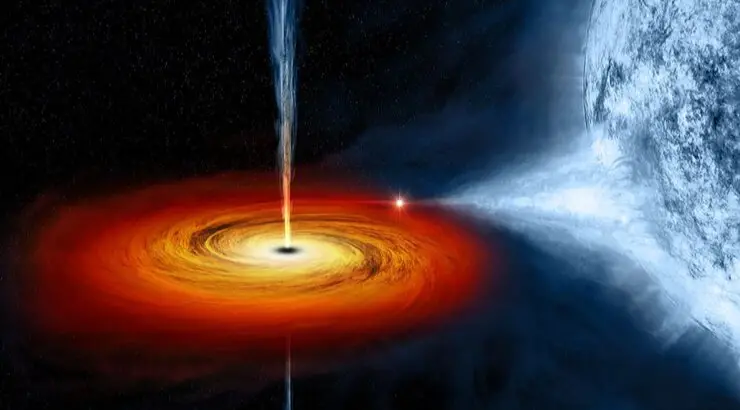Science & Tech
Scientists Will Soon Have Real-Time Video of a Black Hole Devouring Stars
It makes you wonder about the limits of science and what will be possible in the coming decades and centuries.

(TMU) — Barely half a year ago, astrophysicists made history by unveiling the first ever photograph of a black hole—or, more correctly, the accretion disk of hot, luminous matter around a black hole.
The international team behind this historic work used a global, “virtual” network of telescopes known as the Event Horizon Telescope (EHT). And their photography is about to turn into cinema, as the group has announced plans to capture the first real-time video footage of a black hole devouring matter.
For the group’s new project, the next-generation EHT (ngEHT), 11 new telescopes will be added to the network by 2020, allowing scientists to observe the environment surrounding the black hole. They hope to get 10 times more data from their research.
EGT leader Shep Doeleman said in an interview:
“We can see the black hole evolve in real time. Then we can understand how it launches these jets that come from its north and south poles. We can see how it evolves with the galaxy. We can even test Einstein’s gravity in completely different ways, by looking at the orbits of matter—not light, but matter—around the black hole.”
The size of the target matters. In the case of M87—the distant galaxy whose supermassive black hole was the star of the recent photograph—the accretion disk is bigger than our entire solar system. In addition to how difficult it is to capture the light of an object from which no light can escape, M87’s mass equals 6.5 billion suns, making the orbits of matter around it rare and hence confounding attempts to capture time-lapse data.
The black hole (Sagittarius A*) at the center of our galaxy, on the other hand, equals only 4 million suns—small by comparison. This means that scientists can capture matter making several orbits in the course of a couple of months, allowing them to create a video that will show, for the first time, the rate at which that matter is devoured by a supermassive black hole.
“[Sgr A*] is very active, and during the course of one night of observing, you may see eight or nine orbits of material around that black hole,” said Doeleman, whose dream is to display hours of footage of our galaxy’s black hole feasting on stars and cosmic debris.
It makes you wonder about the limits of science and what will be possible in the coming decades and centuries. It is currently unfathomable for us to imagine a nano-camera traveling into the event horizon of a black hole and reporting back data. But so too was the thought of ever photographing a black hole to begin with.
How close will the human mind get to the most destructive power in the universe? Only time will tell.
By Jake Anderson | Creative Commons | TheMindUnleashed.com
Typos, corrections and/or news tips? Email us at Contact@TheMindUnleashed.com
